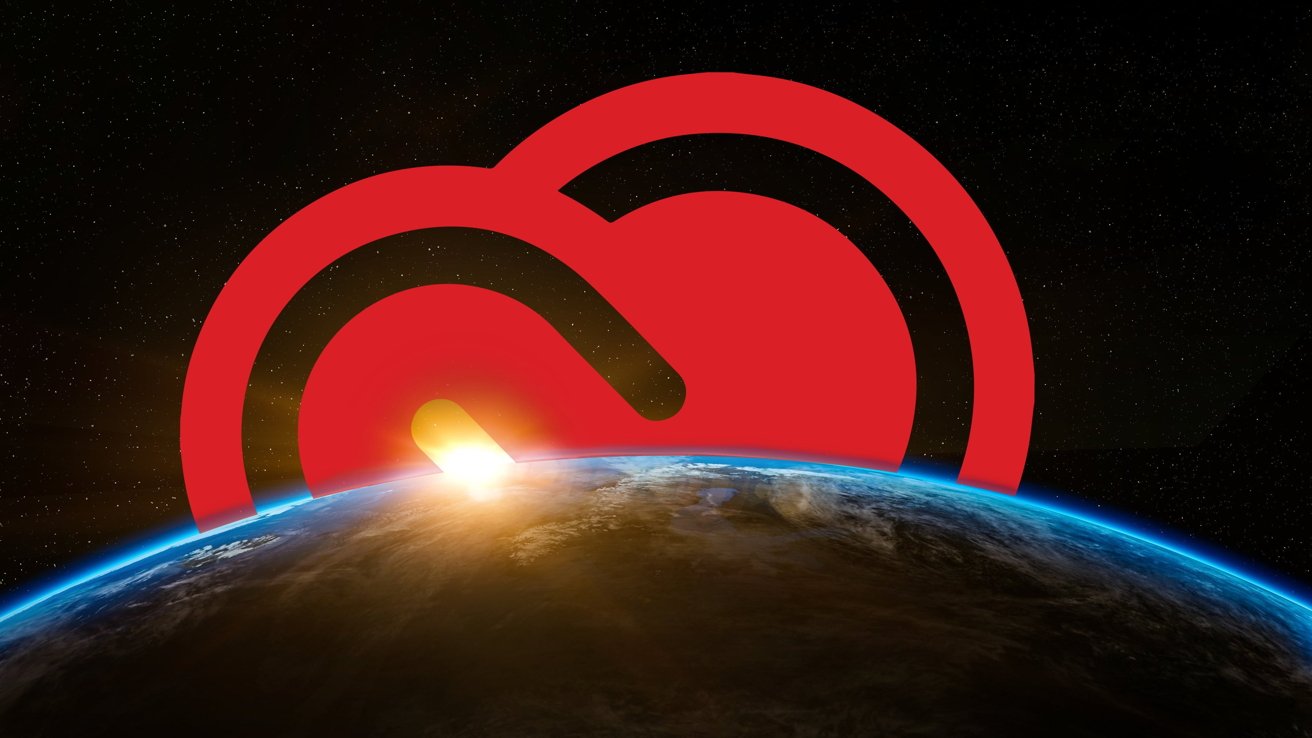Time to switch to Linux 😁👍 (there are plenty of Adobe alternatives for it, although they don’t necessarily offer 100% replacements). I’m convinced that Adobe is one of the major reasons that people stick with windows. If worse comes to worse you can run windows on Linux using a virtual machine (and believe you me, if I can do it then you can too).
Time to switch to Linux 😁👍 (there are plenty of Adobe alternatives for it,
Unfortunately this is not really true. I think people who say “just use GIMP” have only ever used PS to open and crop images. Inkscape is also nowhere near Illustrator, and Scribus feels more like QuarkXpress circa 1998 than a viable InDesign replacement.
I have to agree. I’ve used a great many software packages over the years, but having been given an Adobe Creative Cloud subscription by my university, as several of Adobe’s programs are required for the degree I’m doing, I’ve been very annoyed to discover that the alternatives really aren’t on the same level. They work, sure. You can get the job done with them. But I am genuinely finding Photoshop to be significantly more powerful than everything else I’ve used. And it’s really annoying because I’ve never liked Adobe as a company.
The only apps I’ve used that come even remotely close are those by Serif/Affinity, but even they don’t have feature parity. They were also just bought out by Canva and will likely become fully enshittified soon.
The one thing I’ve been dissatisfied with Photoshop for, in comparison to another app, is its traditional media analogues do not come even close to Painter’s, and I’ve not been able to get any brushes set up in a way that replicates them. There’s professionals that use Painter in addition to Photoshop because of that, and I expect I will as well - but I really notice the features missing that I use a lot in Photoshop.
I couldn’t paint to save my life, so I didn’t know about that aspect. How does Krita stack up?
Been a while since I used Krita, so it’s hard to compare Krita from 3 or 4 years ago with Photoshop 2023, but it was okay. Better than GIMP, but unless there’s been some major changes, it doesn’t have anywhere near the versatility in tools and filters as Photoshop.
This feels like the key difference between Photoshop and the others. There’s an awful lot of stuff that previously I would have to do manually, sometimes over several hours, that Photoshop can do in seconds, either because there’s a tool or filter for it, or sometimes just because Photoshop is so much more responsive. This is really hard to quantify in an objective way, far more so than pointing out whether a feature is present or absent, but… I use an art tablet and Photoshop just responds to the pen better.
So like it’s not really that it’s impossible to do amazing work with the free apps, it’ll just take a lot longer. I liked your analogy in your other comment, about the e-bike vs pickup truck: you definitely can move that half a ton of crushed stone with an e-bike, but it’ll be quicker and less work with a pickup truck.
This is just even more justification to use alternatives. If a mass migration to alternatives occurs, those apps will flourish and more dev time can be arranged via new devs interested in volunteering or outright being employed to meet demand.
Adobe is only so big because of their userbase. Migrate that userbase to a less cancerous set of applications and the userbase stands to benefit greatly.
That would probably work for hobbyists, but I have my doubts that professionals, who rely on Adobe products for their livelihood, could use unsuitable software for years in the hopes that volunteer devs will eventually add the features they need. In the other post about this topic, someone commented that GIMP’s devs are refusing to fix problems that are repelling new users, which is not going to encourage Adobe users to make the switch. GIMP still doesn’t have fully functioning, reliable non-destructive editing, which is 100% essential for anyone beholden to a boss or client who is going to change their minds a couple of times between now and next month.
Adobe is big because of their userbase, but their userbase is big because they make genuinely powerful software that fits the needs of professionals. The free options (and the cheap proprietary options) are not there yet, and probably never will be. Professionals aren’t going to switch until the features they need are there (because seriously, why would anyone use a tool for their job that doesn’t actually allow them to do their job properly?), but the features aren’t going to be added until the professionals switch over. Catch22.
use unsuitable software for years in the hopes that volunteer devs will eventually add the features they need.
There’s an opportunity here to unbundle Photoshop from itself.
Since my background is print, I can say for at least a few more weeks, there’s an audience interested in reading RAW, cropping, toning for both CMYK and RGB, scratch removal on negatives and cutouts. And literally nothing else.
And so now imagine anyone else. They don’t need CMYK. What the fuck is that, anyway?
That Photoshop has gained bloat is not something to emulate. FOSS shouldn’t try to replicate it so long as there’s a universal file format one can jump between apps to manipulate.
I don’t particularly want to jump between a dozen different apps to have access to every single tool and filter I use, especially when even when using a single file format (PSD), not every app treats layers in the same way. In a detailed digital paint, you can very easily have hundreds of layers, so it’s absolutely a deal-breaker if your layer groupings or group masks are destroyed when switching between apps.
How often does “a bunch of non-devs flock to a half-baked community FOSS project and suddenly gain a bunch of devs” actually play out?
The one reasonable possibility is that they might pick up a designer or two, but how many community FOSS projects seriously consider non-code or non-art contributions? Because based on the FOSS software I’ve used, it’s a vanishingly small number.
Coders over-value code, and under-value everything else.
Adobe has probably employed dozens of top-level PhDs to implement and train AI models, optimized their code.
Hobby projects will never reach that level regardless of the number of users.
Even proprietary developers would have to close the gap made for 10+ years, with far less resources. Just look at the state of Affinity…
I don’t think it’s realistic.
We’ll agree to disagree I suppose. The alternatives don’t necessarily have to be FOSS either. A perfect example of a viable alternative to a predatory “industry standard” exists in the audio production world; REAPER.
When I was in College, Pro Tools was the required software. Pro Tools at the time was a walled garden ecosystem, trapping anyone who sunk their hard earned cash into an environment rife with anti-consumer practices, hardware brand restrictions and invasive DRM.
It cost me over $600 CAD at the time for a bundle containing a feature-limited copy of Pro Tools and a Digidesign MBox.
Meanwhile, REAPER’s noncommercial license was $60. That $60 got you a full featured copy of the DAW with support for the next two full version upgrades (which turned out to be nearly a decade of updates). You could also use any hardware interfaces you desired without restriction.
REAPER also has a free trial that is full-featured. No restrictions at all, even the trial length is unlimited. Why? Because they respect the consumer and trust that if you find value in the software you’ll support their work by paying for a copy. That purchase is one of the best I’ve ever made.
In my experience, REAPER was equally as capable as Pro Tools or any other DAW on the market at the time. As of now I’d wager it’s the superior product.
A world where consumers are respected currently exists, its just not in the hands of the corporate world. The best way to make a better future for everyone in the software world is to not put up with anti-consumer practices and engage with companies and developers that respect our time and hard earned cash instead of treating us like cattle.
I think the advancement in graphics and computer vision is too huge to be comparable to what happened in audio.
I feel like Linux alternatives often falter by trying to offer as extensive of a feature set as the proprietary options. GIMP would be better if it simplified it’s menu’s and focused on offering a strong central feature set, then expand on that core over time to offer a powerful workflow of it’s own.
I noticed this especially with FreeCAD, which is trying to do like 12 things for some reason? Just offer intuitive parametric cad and focus on it. We don’t need OpenSCAD inside FreeCAD because OpenSCAD is already it’s own thing for example.
This happens when a small project has 12 developers each scratching their own itch in their own time, not a team of 120 developers getting paid to work on the same itch 8 hours a day.
In the case of FreeCAD they’re actually starting to reign in and focus more now, and there are more contributors.
That makes a lot of sense when you put it that way. For some reason I never factored that individuals were extending apps for their own use cases lmao
Pirate
I’m curious about what you think is missing from Inkscape. I use it and illustrator for design work all the time, and I’ve never run into issues with something missing from Inkscape.
For example you can’t adjust spacing between paragraphs at all. I think that’s because it’s unsupported in the SVG spec rather than an Inkscape issue, but still. Adding printer’s marks is also a total shitshow.
I will say however that Inkscape vs. Illustrator is the closest matchup of the three Adobe design apps. I like Inkscape and use it whenever I can to avoid firing up my Windows VM.
What I’m hearing is Scribus would be suitable if I’m deliriously tired and thinking in Quark 4.x shortcuts.
deleted by creator
If you just want to crop and adjust levels, GIMP is fine. If you want to clone stamp or replace backgrounds etc (or of course work with motion graphics) then there’s no comparison. Nondestructive editing has been a huge drawback for GIMP since its inception but they are finally adding that, which is good. I’m not even sure if they’ve added CMYK support. Text editing is also godawful. I could go on, but for real work, it just isn’t the same at all.
People who say they are interchangeable is like saying an e-bike is the same as a pickup truck. If you just need to commute downtown, they can both work. But if you need to move a half ton of crushed stone, they are not comparable.
Photoshop select tools are awesome back to like CS4. Magnetic Lasso and Quick Select are super powerful and let you chain other tools together, and I remember something about Photoshop having good feather select features as well. Not having that base in other software severely limits what you can do.
Photoshop’s healing and clone stamp tools are also good at predicting what I want to fix or patch. If GIMP or other OSS editors have those features, they’d be in my toolbox for sure.
Disclaimer, my old copy of photoshop was “gifted from a friend” so I’m not trying to shill them. I haven’t used GIMP in a few years, so maybe (hopefully) it’s better than it was back then
This was very much me, and for a rather stupid reason: My resume was in InDesign.
It would have served me well to realize InDesign resumes are a bad idea to get past ATS years ago, but I eventually came around.
I can still fire up CS6 in a VM; for my needs, CC never made sense. Like, seriously, for ID, layers and transparency and trapping and anything else I might need for offset or digital is taken care of. Illustrator has a competent Live Trace feature. Photoshop has the magnetic lasso, which is about as advanced as I need to get past cropping and toning. Audition lets me make really bad mashups.
The only subscription I have that is not a utility or insurance is Mullvad. I don’t want to rent anything on my computer, thank you very much. Yarr!
I agree. The problem is there are too many people who make excuses for switching which wouldn’t exist if they just actually switched. Saying the alternatives suck compared to Adobe products…well if everyone stopped using Adobe products today and all switched to the various other software out there that does run on Linux, I guarantee you within a year, they would be all on par with the Adobe products because they would finally have the financial backing necessary to accomplish that goal.
Adobe still exists simply because they are a behemoth due to existing for 40 years. People have choice, even professionals, even businesses.
deleted by creator
That’s awesome! I began my journey while at college in 1999. But I never once fully committed to the Linux desktop on my personal PC until now with all this CoPilot Recall nonsense. I would always have Windows in my back pocket, just in case.
Not anymore. I’m done with Microsoft and certainly done with Adobe (not that I did much with their software). I’m able to play all the games I want in Garuda (KDE Dragonized) and have had no issues beyond minor tweaking.
Hi ulkesh, looks like you might be responding to a comment I deleted because I felt like I was bragging and being too preachy. Anyway, do you use any other flavors of Linux besides Garuda (I had to look it up, I hadn’t heard of it!)? How do you like it? And your DE environment of choice is, I guess, KDE?
I didn’t find it bragging or preachy, btw.
Right now, because I’ve basically said good-bye to Windows, I am wanting a distro that caters to gaming. Nobara, Bazzite (though I’m not yet a fan of the “atomic” style distros), and Garuda all seem to deal with this relatively well. Garuda feels more baked than the others at the moment, but Nobara is by the same person who has created and maintained the proton-ge and wine-ge builds (goes by GloriousEggroll) – so once it is upgraded to Fedora 40 base, I may consider switching, but haven’t fully decided.
I have run Garuda Hyprland and Garuda KDE Dragonized. I loved them both, but I have settled on Garuda KDE Dragonized because it has everything set up out of the box for gaming and I’m more accustomed to that kind of desktop environment. Hyprland was interesting and I enjoyed it mostly, but there were some things that I couldn’t easily get past (mainly, I like to minimize/hide windows, and Hyprland’s method of that is to just shove the window to another desktop, or quit the app, or hope it has a system tray icon for it and can “minimize” to that).
If I didn’t care about gaming, I’d probably go with either Manjaro (Arch based, but uses its own repos to slow down the rolling release of Arch by about month or so), or Ubuntu, just to guarantee a higher degree of stability (Arch can sometimes break things, but it’s not that often, in my experience).
While I know the community and NVIDIA are working to get explicit sync pushed out which will help a lot of the NVIDIA woes running on Wayland, about six weeks ago I decided to not wait anymore on that and went and bought an AMD 7800XT video card to run instead of NVIDIA. Wayland, and gaming, honestly feel much smoother to me now (and I don’t have to mess around with video drivers anymore). The only quirk about Wayland has to do with global mouse key shortcuts (namely, I use a mouse button for Push-To-Talk in Discord and had to set up a quirky solution).
I’m eager for KDE Plasma 6.1 because it’ll have built-in RDP server support which will allow me to remote in easier using an RDP client from my Mac work laptop (I don’t really care for VNC [too slow], Rustbox [too buggy for me], or many of the other remote desktop solutions out there).
@hedge
I love Affinity Photo, Designer, and Publisher… They are a powerful Adobe replacement.
Since it’s been mentioned a lot this week because of these changes, here’s David Revoy’s guide to a fully FOSS professional digital painting setup, not perfect because many, MANY things aren’t working as they should yet (both the move to Wayland and to Appimage/Flatpak have complicated things and lots is broken), but he guides you to a setup that works today.
There’s also the option of different commercial stuff (The Affinity suite, DaVinci products, etc.), but i’m a bit biased
And everyone was so angry, they kept giving Adobe’s monopoly obscene amounts of money via overpriced subscriptions.
deleted by creator









